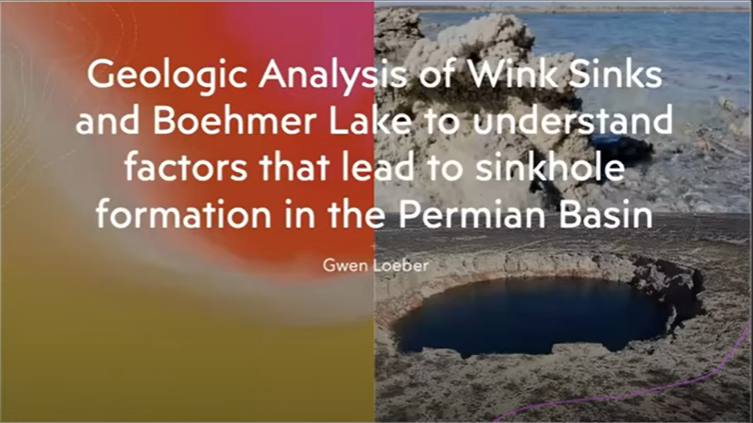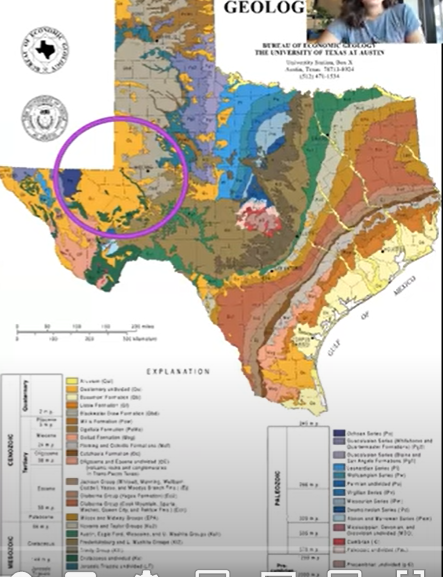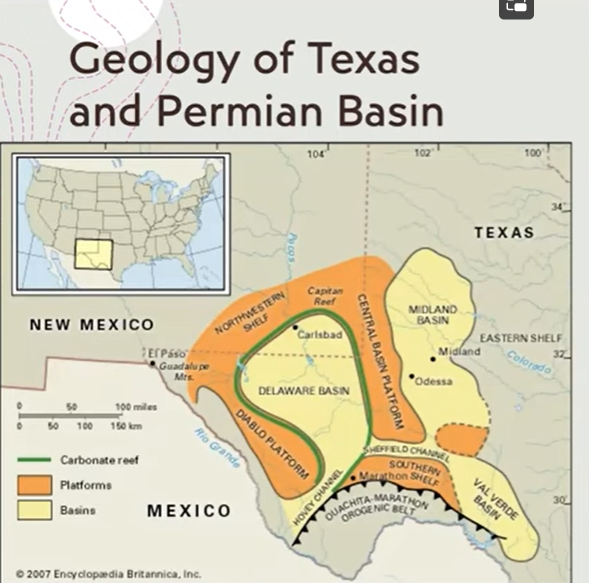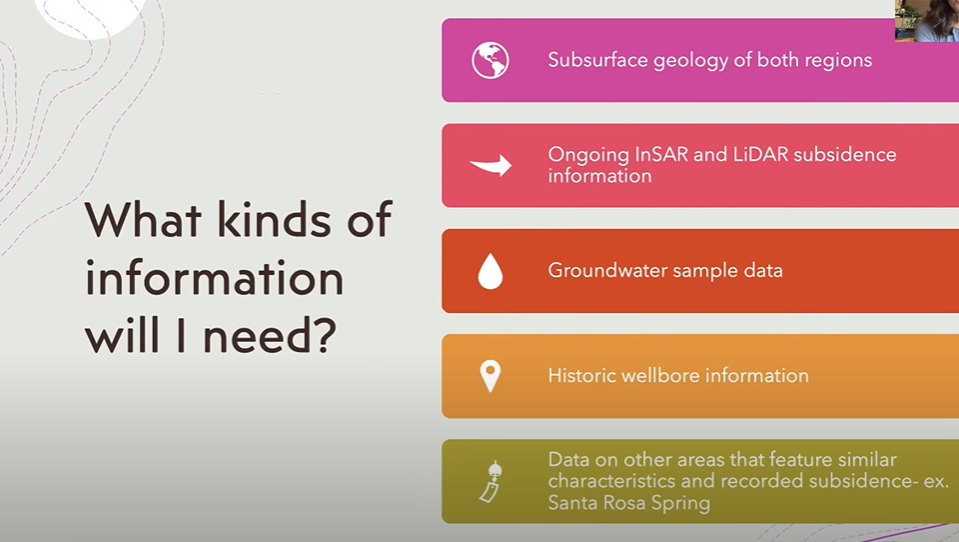Research on Sinkholes in the Permian Basin, Presented by Gwen Loeber
by Andy Thompson, MSDC Secretary

MSDC, as part of its mission to promote mineralogical education, for many years has provided funds to support geological research and education. In particular, our club has awarded annual grants to help support research by George Washington University geology students. Each student has studied geology with and been recommended by Professor Richard Tollo. This year’s recipient, Ms. Gwen Loeber, graduated in May 2022 with a major in business and a minor in geology. She drew on both disciplines and designed a summer research project which reflected those interests.
As this year’s recipient of the Foshag-Hronik-Dhyse-Payne Award, Gwen, a native of Texas, has been exploring the factors leading to the formation of sinkholes in the Permian Basin in Western Texas. Of course, at the time of her June presentation to MSDC, her field work was yet ahead of her. But she was able to provide MSDC with a clear outline of her interesting project – still very much a work in progress.
Permian Basin Geology
In the map below, the circled area identifies the Permian Basin which today is known for its rich petroleum, natural gas and potassium deposits. These valuable resources, as well as their associated problems, are rooted in the geological origins of the two ancient basins, the Delaware and Midland. Gwen said that hundreds of millions of years ago (mya), in the Paleozoic Era (538 mya to 251 mya) the region was covered by a shallow inland sea which eventually filled with organic material and was subsequently buried beneath accreting land.

Sinkholes and Land Subsidence
Fast forward to today and we see a region that also known for a growing number of very large, problematic sinkholes and land subsidence. Salt has eaten its way through the underlying limestone and created subterranean caves and unstable karst formations. When you watch Gwen’s 22-minute YouTube presentation with questions and answers , you will learn about the impact of decades of drilling for water in the region, whether the wells are sealed or not, and whether abandoned or not. They have created economic and environmental problems such as contamination of valuable water aquifers.
Sinkholes and subsidence are problems with the potential to grow more damaging over time. As a result, understanding the factors involved in sinkhole formation is of interest not only from a geologic point of view, but also from the potentially significant economic and environmental effects, as well.

Gwen's Research – A Work in Progress
Gwen had gathered a substantial amount of research finding in 2021 and shared her earlier study on Texas sinkhole development. In 2021 through mid-2022, she focused on geological analysis at Wind Sinks and Boehmer Lake. During this time, she tapped into a number of technical databases, including he results of InSar (Interferometric Synthetic Aperture Radar) and LIDAR (Light Detection and Ranging) satellite technology. Her particular focus during the summer of 2022 will be the effect of improper wellbore closure on land subsidence and surface uplifts, as well as on sinkhole formations. All this damage has been caused primarily by salt dissolution in the Permian Basin.
Gwen summarized her summer research as collecting five types of information shown below. This project will culminate in the synthesis of a great deal of geologic and economic information. The hope is that she will be able to share her findings through publications and further work with the local affected communities.

Gwen generously gave MSDC permission to record her very interesting presentation which lasted for 22 minutes. To view it in its entirety, click on the YouTube link HERE.
